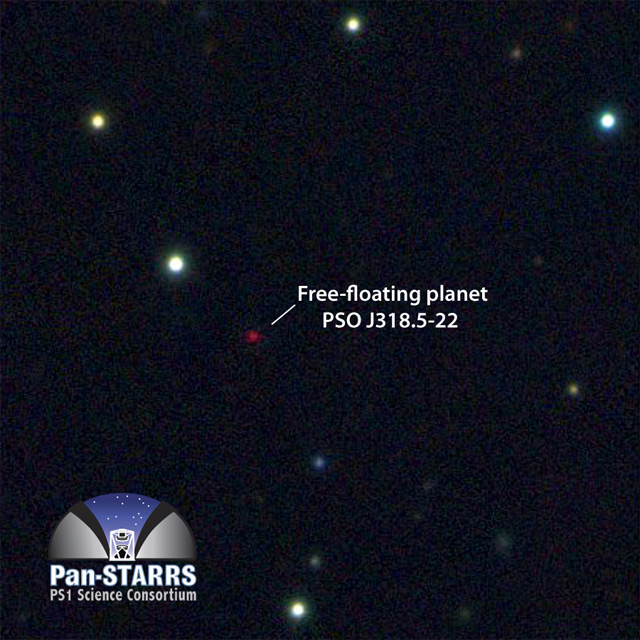In space, discovered a strange lonely planet without a star

Artistic presentation of PSO J318.5-22
An article was published in the Astrophysical Journal Letters describing an extremely rare discovery - the first of its kind planet to fly freely in outer space. Scientists have no idea where the planet PSO J318.5-22 came from and where its star disappeared. The age of PSO J318.5-22 is estimated at 12 million years, which is very small by cosmic standards, that is, the planet has literally just formed. A gas giant weighing six times that of Jupiter is now located 80 light-years from Earth.
We discovered the planet by chance when we launched a brown dwarf search program on data taken by the Hawaiian telescope Pan-STARRS 1 (PS1). Due to their extremely low temperatures, these stars glow very weakly in the red range. The search program processed 4 petabytes of photos and produced PSO J318.5-22 as one of the anomalous results. The object was much redder than the reddest dwarfs.
Additional studies have shown that the properties of this gas giant are similar to those of similar gas giants around young stars, but only here the star is absent.

“We have never before seen an object like this freely flying in space,” says Dr. Michael Liu of the Institute of Astronomy at the University of Hawaii. “I often wondered if such lonely objects exist in the Universe, and now we know that this is so.”
Recently, thousands of planets have been discovered outside the solar system, but very few of them can be directly observed through a telescope. Even if this is possible, the presence of a nearby luminous body impedes their study. In the case of the planet PSO J318.5-22 there is no interference, so scientists have a rare opportunity to study how gas giants like Jupiter develop shortly after birth.
